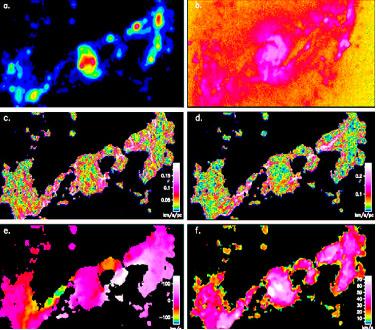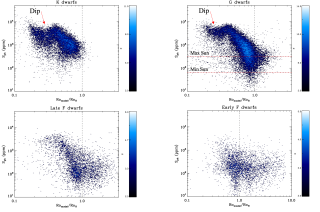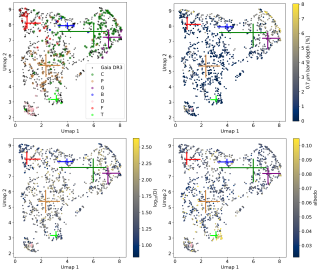Images of the bar of galaxy NGC 1530 obtained using the TAURUS instrument at the WIlliam Herschel telescope at the Observatorio del Roque de los Muchachos
Advertised on
References
A&A 413, 73-89 (2004)
Tests have been carried out for the first time on the hypothesis that the structure of interstellar dust around galactic bars is determined by the velocity field of the gas. The dust is found in regions delineated by high gas speed gradients, something which had been proposed but not observed. The gradients themselves seem to be related to intense star-forming regions.
More info
Ionized gas kinematics and massive star formation in NGC 1530
Abstract. We present emission line mapping of the strongly barred galaxy NGC 1530 obtained using Fabry-P´erot interferometry in Hα, at significantly enhanced angular resolution compared with previously published studies. The main point of the work is to examine in detail the non-circular components of the velocity field of the gas, presumably induced by the strongly non-axisymmetric gravitational potential of the bar. To do this we first derive a model rotation curve making minimum assumptions about kinematic symmetry, and go on to measure the non-circular component of the full radial velocity field. This clearly reveals the streaming motions associated with the spiral density wave producing the arms, and the quasi-elliptical motions with speeds of order 100 km s−1 aligned with the bar. It also shows in some detail how these flows swing in towards and around the nucleus as they cross a circumnuclear resonance, from the dominant “x1 orbits” outside the resonance to “x2 orbits” within it. Comparing cross-sections of this residual velocity map along and across the bar with the surface brightness map in Hα indicates a systematic offset between regions of high non-circular velocity and massive star formation. To investigate further we produce maps of velocity gradient along and across the bar. These illustrate very nicely the shear compression of the gas, revealed by the location of the dust lanes along loci of maximum velocity gradient perpendicular to the bar. They also show clearly how shear, seen in our data as velocity gradient perpendicular to the flow, acts to inhibit massive star formation, whereas shocks, seen as strong velocity gradients along the flow vector, act to enhance it. Although the inhibiting effect of gas shear flow on star formation has long been predicted, this is the clearest observational illustration so far of the effect, thanks to the strong shock-induced counterflow system in the bar. It is also the clearest evidence that dust picks out shock-induced inflow along bars. These observations should be of considerable interest to those modelling massive star formation in general.
Year
2003



